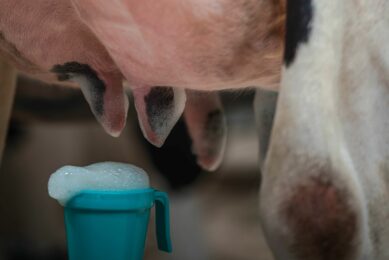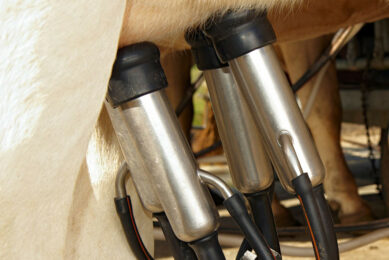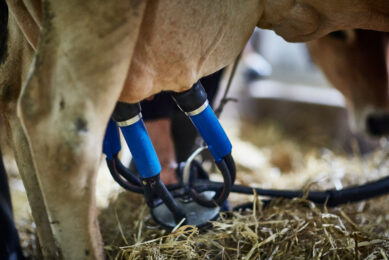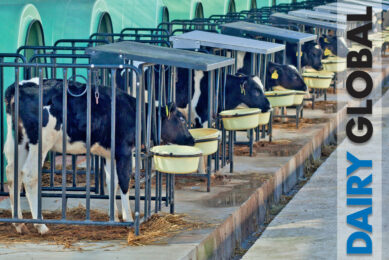Optimising the mechanical milking process
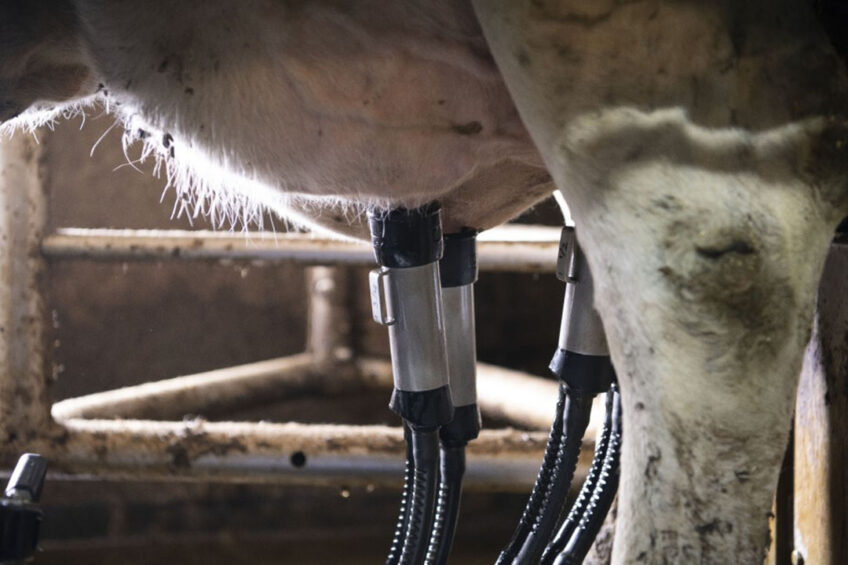
Milking machine design affects milk extraction time, quantity and quality. Milking machine parameters such as vacuum level, pulsation rate and pulsation ratio also impact the welfare of dairy cattle. Thus, there is a need to optimise the milking process.
Optimisiation will enhance milking efficiency and reduce negative effects of milking machines on milk quality, sanitary status of the mammary gland and the incidence of mastitis, thereby improving cow health, welfare, performance and profitability.
Milk in the udder of dairy cattle is categorised into cisternal and alveolar fractions. The cisternal fraction moves from the alveoli to the cistern during the milking interval and is immediately obtainable without milk ejection.
The alveolar fraction can be removed from the udder by milk ejection during mechanical milking. Since the cisternal fraction in dairy cattle makes up to 20% of total milk volume, proper pre-stimulation of teats or combination of reduced vacuum and shortened liner open phases before cluster attachment is beneficial.
Pre-stimulation makes the alveolar compartment of milk available, creates a positive milk pressure inside the teat cistern and refills the teat during the liner-closed phases.
An optimal milking process requires continuous availability of milk from cluster attachment until removal. Lack of teat preparation leads to delayed milk ejection, transient milking on empty teat, increased mouthpiece chamber vacuum and climbing of the teat cups at the beginning of milking which, accompanied by increased mechanical load on the teat tissue, causes congestion and damage.
Early teat cup detachment at a high threshold level prevents the negative influence of high vacuum on the teat with decreasing flow rate at the end of the milking process and by simultaneously decreasing the machine-on time will enhance overall milk production.
Mechanical milking
Mechanical milking causes short, medium and long-term changes in teat condition. Discoloured teats, ringing, swelling and openness of the teat canal are classified as short-term reversible changes. Meticulous observation of these changes prevents long-term effects of inappropriate milking machine settings on the tissue.
Factors such as levels of system vacuum, level of compressive load and fluctuations of teat-end vacuum and mouthpiece-chamber vacuum affect teat tissue integrity. Prolonged frequent milking and raising the vacuum level result in excessive keratin growth and thickening of the keratin layer, which impair complete teat canal closure and increase the risk of bacterial invasion, colonisation and intramammary infection.
High vacuum levels and long liner open phase enhance the risk of teat-end congestion. In addition, compressive load level is linked to the thickening of keratin layer.
Teat-end congestion causes a decrease in flow rate and in milking speed. A prolonged period of reduced flow due to overmilking damages the alveolar epithelium and the epithelial membrane lining of the teat because of continuous friction of its walls. These alterations lead to hyperaemia, haemorrhage and oedema of the epithelial membrane of the teat cistern.
Furthermore, overmilking increases the teat surface temperature, thickens the cisternal wall, decreases teat diameter and prolongation of the teat canal and enhances hyperkeratosis and intramammary infection rate.
Best milking practices
A clean environment, adequate bedding and proper resting areas are important to decrease the risk of mastitis. In addition, knowledge of udder and teat anatomy is needed to understand the milking process and optimal udder health. Stressors such as loud music, new people or any changes in the milking routine need to be avoided prior to milking because they interfere with oxytocin release and milk letdown. Animal caretakers need to be patient with cows, pay attention to details, follow routine practices and be observant for any indications of mastitis or health issues.
Prior to milking, udders should be cleaned, and a pre-dip germicide needs to be applied half-way up the teat. After removal of the pre-dip, it is recommended to milk 3 or 4 squirts of milk into a strip cup and to test it for abnormal milk and inflammatory cells.
Modern dairy farms are equipped with up-to-date mechanical milking systems that rely on the interaction of physiological regulation of milk ejection and adequate settings of vacuum and pulsation.
The main goal of mechanical milking is to efficiently harvest milk from clean, dry and properly stimulated teats without detrimental impacts on teat condition and overall dairy cattle health and welfare. The best milking practices described here improve dairy cattle milking experience, milk yield and composition.
Join 13,000+ subscribers
Subscribe to our newsletter to stay updated about all the need-to-know content in the dairy sector, two times a week.



